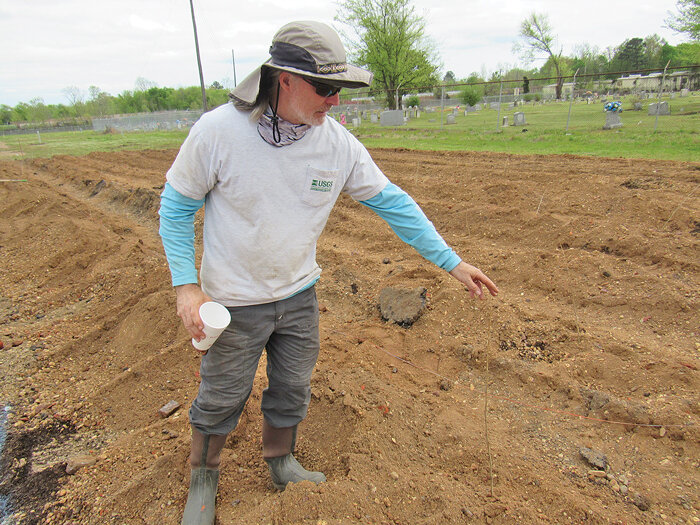Excerpt from the Commercial Dispatch. Read entire article here.
By Slim Smith, March 31, 2021
Jim Landmeyer, research hydrologist with the U.S. Geological Survey, examines one of the 2,500 hybrid Poplar seedlings planted on the Kerr-McGee property in Columbus. Trees are being considered as a possible option for treating contaminated ground-water at the site of the former creosote plants. Slim Smith/Dispatch Staff
Until now, most of the cleanup at the former Kerr-McGee creosote plant in the Memphistown area of Columbus has focused on excavating and removing contaminated soil near the surface at the portion of the 90-acre property north of 14th Avenue.
But much like the wounds the community suffered as a result of the environmental crisis, the damage goes much deeper.
On Tuesday, Lauri Gorton of the Greenfield Environmental Multistate Trust and Charles King of the Environmental Protection Agency used a pair of Zoom town hall meetings to update citizens on the progress while devoting much time to talking about other options for cleaning up the contamination that is too deep for removal by excavation.
“We have several alternatives that we have identified,” said Gorton, project manager for the Trust. “We will look at time and compare and evaluate them using EPA criteria. No decisions have been made on which options or combination of options we’ll use.”
Gorton said areas of the site that can’t be excavated and removed will rely on two other strategies — treatments that will make the contamination less toxic along with containment and capping measures to keep the contamination from moving or coming into contact with people.

